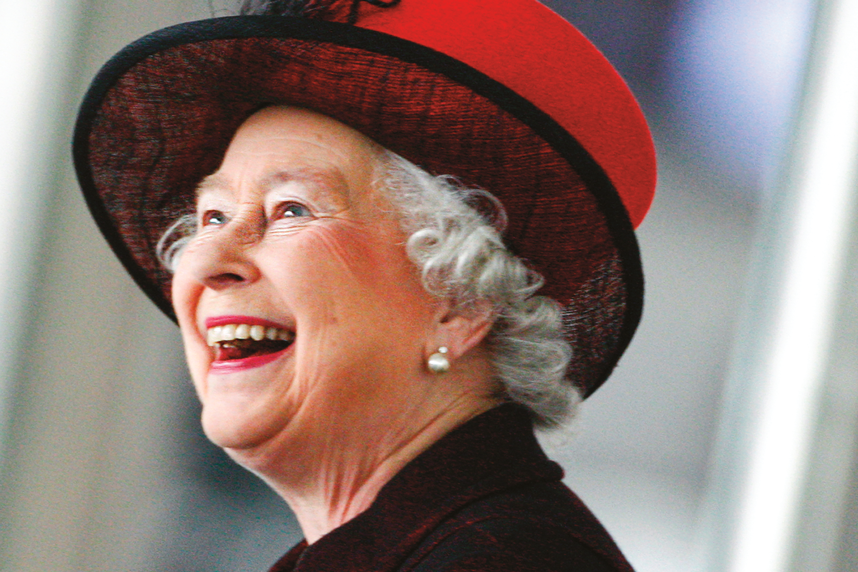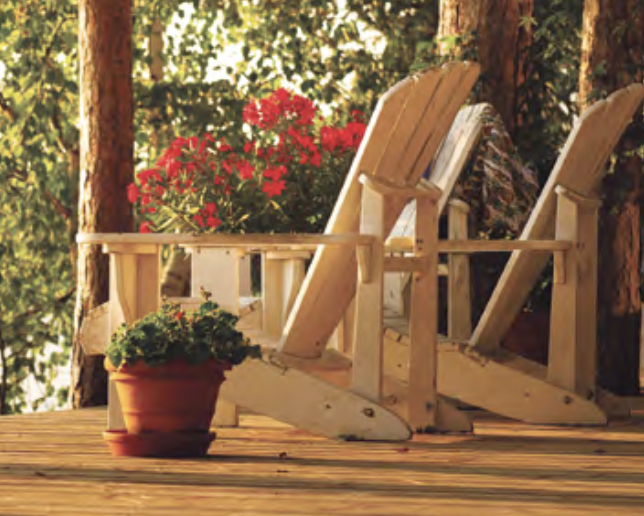By Murray Lewis
She might have lived her life as a minor royal; instead, she became a queen and would serve her people with devotion for 70 years.
She was 14 when Hitler’s bombers began levelling the London her parents refused to flee. When she turned 18, the Second World War was still raging and she volunteered for service in the women’s branch of the British Army, the Auxiliary Territorial Service, and became a truck driver and mechanic. By January 1952, she was 25, married, and the mother of two children when her father died at the young age of 56 and she learned that she had inherited his job. Just like that, young Elizabeth Windsor had become Queen of the United Kingdom of Great Britain and Northern Ireland—and of Canada.
To many Canadians, Elizabeth II always seemed to have been born for the role, but she was famously not supposed to become the Queen. When her grandfather, George V, died in January 1936, her 41-year-old uncle, known as David, succeeded him, becoming King Edward VIII. Edward, however, was in love with a divorced American socialite, Wallis Simpson, and the head of the Church of England could not marry a divorced woman, much less a woman with two ex-husbands. Edward chose the woman he loved over the throne, and in December, less than a year after becoming monarch, he abdicated. His brother Albert, known to the family as Bertie, very reluctantly became George VI, and his 10-year-old niece, Elizabeth, became first in the line of succession.
Lilibet
Elizabeth Alexandra Mary Windsor was born on April 21, 1926, to her loving parents, the Duke and Duchess of York—Bertie and Elizabeth (née Bowles-Lyon), known in later years as the Queen Mother. They doted on her, as did her grandfather, the King, and grandmother, Queen Mary. She was especially close to her grandfather and to her father.
She may not have been the heir to the crown, but she was still a princess and lived a very public life. The press, both in Britain and abroad, adored her, and she was only three when she was featured on the cover of TIME in April 1929. Under a photo of a pensive-looking child, her name is given as “P’incess Lilybet.” (Lilibet was her name for herself and became a family name, one that the Queen’s grandson Prince Harry and his wife, Meghan, gave their daughter in June 2021.) That she looks unusually thoughtful for a child wouldn’t have surprised her first prime minister, Sir Winston Churchill, who first met her when she was two and commented that she had “an air of authority and reflectiveness astonishing in an infant.”
Her sister, Margaret Rose, was born on August 21, 1930, when Elizabeth was four. Like all royals before them, the girls were educated at home, by their governess and by private tutors. Elizabeth learned to speak French and loved to read. One of the future queen’s instructors was Henry Marten, the provost of Eton College, who provided her with a solid grounding in constitutional history. Despite being home-schooled, Elizabeth learned to get along with other girls her age as a Girl Guide.
When the Second World War was declared, some proposed that the young princesses be evacuated to Canada, but their parents said no. “The children won’t go without me,” the Queen said. “I won’t leave without the King. And the King will never leave.” The girls spent most of the war living at Windsor Castle, just 50 kilometres (30 miles) west of Buckingham Palace, which was hit by German bombs nine times.
In October 1940, during the Blitz, 14-year-old Elizabeth, with her sister by her side, gave a radio broadcast—her first—on the BBC’s Children’s Hour program to address the many thousands of young evacuees in Britain as well as the children of the Empire and the United States of America. Displaying the calm, reassuring manner for which she would become famous, she said: “Thousands of you in this country have had to leave your homes and be separated from your fathers and mothers. My sister, Margaret Rose, and I feel so much for you, as we know from experience what it means to be away from those we love most of all.”
On Victory in Europe Day—May 8, 1945—the two princesses (having asked their parents’ permission and with a few guardians alongside) were out in the streets of London celebrating the end of the war in Europe with the jubilant crowd. “All of us [were] just swept along on a tide of happiness and relief,” Elizabeth said later. ‰
The Handsome Cadet
Shortly before the war, in 1939, the King and Queen took their daughters with them on a visit to the Royal Naval College in Dartmouth. There, an 18-year-old cadet was assigned to escort the two girls. He was their third cousin, Prince Philip of Greece and Denmark.
Born in Greece, Philip was only 18 months old when his family was banished from Greece and fled the country aboard a Royal Navy cruiser. He was educated in France, Germany, England, and Scotland. Elizabeth had met him twice before—in 1934 and 1937—but this time she was 13, and the handsome naval cadet made quite an impression.
The two corresponded throughout the war, during which the young Royal Navy officer served with distinction in the Mediterranean and in the Pacific. At the end of the war, he was assigned to teach at an officers’ school in the south of England and often drove up to Buckingham Palace to visit. By 1946, Elizabeth was 20 and Philip was 25; the two were in love and wanted to marry, but the King wasn’t pleased, worried that his daughter was too young. Eventually, however, he relented, and the happy couple were married in Westminster Abbey on November 20, 1947.
Philip remained a serving naval officer—until the King died in 1952. It was Philip who broke the news to Elizabeth in Kenya during an overseas trip. She flew home a queen, and her husband had to give up a promising military career for the woman he loved. He was by her side for 73 years (though by tradition, he had to walk two paces behind her), 69 of them as the Duke of Edinburgh and “consort of the British monarch,” the longest-serving royal consort in history to the longest-serving monarch in British history.
It was evident that he was essential to the Queen’s ability to carry out her long service. On the occasion of their 50th wedding anniversary, she said during a speech, “He has, quite simply, been my strength and stay all these years, and I, and his whole family, and this and many other countries, owe him a debt greater than he would ever claim.” Elsewhere she said of him, “He makes me laugh.”
Philip died on April 9, 2021, at the age of 99. Few who saw the Queen at his funeral are likely to forget the image: a solitary black-clad masked figure mourning in a chapel pew, isolated from her family by the COVID restrictions from which she characteristically refused to be exempted.
Vows
In April 1947, on her 21st birthday and five years before she became a monarch, Elizabeth was in Africa when she made a promise in a broadcast to the world: “I declare before you all that my whole life, whether it be long or short, shall be devoted to your service.” Her coronation ceremony six years later, on June 2, 1953, included the Coronation Oath, whereby she swore to govern her people “according to their respective laws and customs,” “cause Law and Justice, in Mercy, to be executed,” and “maintain the Laws of God”; she concluded with “So help me God.” And speaking during her Silver Jubilee in 1977, she said: “When I was 21, I pledged my life to the service of our people and I asked for God’s help to make good that vow. Although that vow was made in my salad days, when I was green in judgment, I do not regret, or retract, one word of it.”
The Queen’s life was indeed long, and she spent it fulfilling her vows. Her family didn’t always make it easy. She and Philip had four children—Charles, Anne, Andrew, and Edward—and like their parents, they’ve been the focus of much media attention. But the media has changed greatly since the Queen’s uncle caused a fuss by marrying a divorcee, and over the years, the Queen’s children provided the scandal-loving tabloids with years’ worth of material. The stories are well known: Anne married Mark Phillips in 1973, and they divorced in 1992; Charles married Diana Spencer in 1981, and the bitterly unhappy couple divorced in 1996; Andrew married Sarah Ferguson in 1986, and they, too, divorced in 1996. (Only Edward married happily—he and Sophie Rhys-Jones were wed in 1999—though both Charles and Anne seem to have found happiness in their second marriages: Charles married Camilla Parker Bowles in 2005, and Anne married Timothy Laurence in 1992.) And more recently, Andrew’s scandals and the strained relations between her grandsons William and Harry added to the Queen’s burden.
Through it all, Elizabeth II carried on as head of state, of the Church of England, and of the Commonwealth and as a globe-trotting ambassador for, and symbol of, her country. Given her repeated commitment to her people, there was never seriously any question of her retiring, and during her reign there have been an astonishing 15 British prime ministers, 14 US presidents, seven popes, 12 Canadian prime ministers, and 13 Canadian governors general.
Canada seemed to have a special place in her affections. She visited 22 times as monarch. Arriving in Halifax in 2010, she said: “My pride in this country remains undimmed. It is very good to be home.” And when the Queen peacefully passed away on September 8, 2022, at her beloved Balmoral Castle in Aberdeenshire, Scotland, her Canadian governor general, Mary Simon, said: “Her Majesty cared about people, about our well-being. This was clear every time we spoke. She cared about Canada and all the unique stories that make up our beautiful country. She called Canada her ‘second home.’”
In an emotional statement, Prime Minister Justin Trudeau said: “It is with the deepest of sorrow that we learned today of the passing of Her Majesty Queen Elizabeth II. She was our Queen for almost half of Canada’s existence. And she had an obvious, deep, and abiding love and affection for Canadians. … She was thoughtful, wise, curious, helpful, funny, and so much more. In a complicated world, her steady grace and resolve brought comfort and strength to us all. Canada is in mourning.”
In a choked voice, the Prime Minister concluded, “She was one of my favourite people in the world, and I will miss her so.” As will many of us.
Photo: Shutterstock






